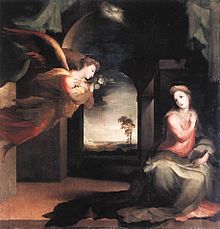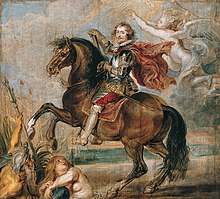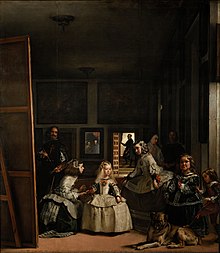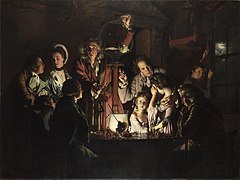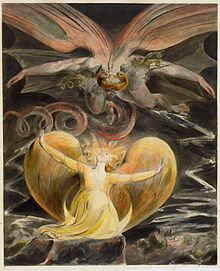J u m p t o c o n t e n t
M a i n m e n u
M a i n m e n u
N a v i g a t i o n
● M a i n p a g e ● C o n t e n t s ● C u r r e n t e v e n t s ● R a n d o m a r t i c l e ● A b o u t W i k i p e d i a ● C o n t a c t u s ● D o n a t e
C o n t r i b u t e
● H e l p ● L e a r n t o e d i t ● C o m m u n i t y p o r t a l ● R e c e n t c h a n g e s ● U p l o a d f i l e
S e a r c h
Search
A p p e a r a n c e
● C r e a t e a c c o u n t ● L o g i n
P e r s o n a l t o o l s
● C r e a t e a c c o u n t ● L o g i n
P a g e s f o r l o g g e d o u t e d i t o r s l e a r n m o r e ● C o n t r i b u t i o n s ● T a l k
( T o p )
1 P e r i o d c o v e r e d
2 A n o n y m o u s a r t i s t s
3 L i s t o f t h e m o s t i m p o r t a n t O l d M a s t e r p a i n t e r s
T o g g l e L i s t o f t h e m o s t i m p o r t a n t O l d M a s t e r p a i n t e r s s u b s e c t i o n
3 . 1 G o t h i c / P r o t o - R e n a i s s a n c e
3 . 2 E a r l y R e n a i s s a n c e
3 . 3 H i g h R e n a i s s a n c e
3 . 4 V e n e t i a n S c h o o l ( E a r l y R e n a i s s a n c e , H i g h R e n a i s s a n c e a n d M a n n e r i s m )
3 . 5 S i e n e s e S c h o o l
3 . 6 N o r t h e r n R e n a i s s a n c e
3 . 7 S p a n i s h R e n a i s s a n c e
3 . 8 M a n n e r i s m
3 . 9 B a r o q u e p a i n t i n g
3 . 1 0 D u t c h G o l d e n A g e a n d F l e m i s h B a r o q u e p a i n t i n g
3 . 1 1 R o c o c o
3 . 1 2 B r i t i s h
3 . 1 3 V e d u t i s m
3 . 1 4 N e o c l a s s i c i s m
3 . 1 5 R o m a n t i c i s m
4 S e e a l s o
5 R e f e r e n c e s
6 E x t e r n a l l i n k s
T o g g l e t h e t a b l e o f c o n t e n t s
O l d M a s t e r
2 2 l a n g u a g e s
● A l e m a n n i s c h ● ا ل ع ر ب ي ة ● Б е л а р у с к а я ● C a t a l à ● Č e š t i n a ● D e u t s c h ● E s p e r a n t o ● ف ا ر س ی ● F r a n ç a i s ● 한 국 어 ● I t a l i a n o ● ע ב ר י ת ● L a d i n o ● М а к е д о н с к и ● B a h a s a M e l a y u ● N e d e r l a n d s ● 日 本 語 ● Р у с с к и й ● S h q i p ● ไ ท ย ● У к р а ї н с ь к а ● 中 文
E d i t l i n k s
● A r t i c l e ● T a l k
E n g l i s h
● R e a d ● E d i t ● V i e w h i s t o r y
T o o l s
T o o l s
A c t i o n s
● R e a d ● E d i t ● V i e w h i s t o r y
G e n e r a l
● W h a t l i n k s h e r e ● R e l a t e d c h a n g e s ● U p l o a d f i l e ● S p e c i a l p a g e s ● P e r m a n e n t l i n k ● P a g e i n f o r m a t i o n ● C i t e t h i s p a g e ● G e t s h o r t e n e d U R L ● D o w n l o a d Q R c o d e ● W i k i d a t a i t e m
P r i n t / e x p o r t
● D o w n l o a d a s P D F ● P r i n t a b l e v e r s i o n
A p p e a r a n c e
F r o m W i k i p e d i a , t h e f r e e e n c y c l o p e d i a
( R e d i r e c t e d f r o m O l d m a s t e r s )
Any skilled painter who worked in Europe before 1800
Artemisia Gentileschi is an Old Master of Italian Baroque art
In art history , "Old Master " (or "old master ")[1] [2] painter of skill who worked in Europe before about 1800, or a painting by such an artist. An "old master print " is an original print (for example an engraving , woodcut , or etching ) made by an artist in the same period. The term "old master drawing " is used in the same way.
In theory, "Old Master" applies only to artists who were fully trained, were Masters of their local artists' guild , and worked independently, but in practice, paintings produced by pupils or workshops are often included in the scope of the term. Therefore, beyond a certain level of competence, date rather than quality is the criterion for using the term.
Period covered [ edit ]
In the eighteenth and nineteenth centuries, the term was often understood as having a starting date of perhaps 1450 or 1470; paintings made before that were "primitives", but this distinction is no longer made. The Oxford English Dictionary John Evelyn : "My L: Pembroke..shewed me divers rare Pictures of very many of the old & best Masters, especially that of M: Angelo..,& a large booke of the best drawings of the old Masters."[3] [3] oude meester mostly meant painters of the Dutch Golden Age of the previous century. Les Maitres d'autrefois of 1876 by Eugene Fromentin may have helped to popularize the concept, although "vieux maitres" is also used in French. The famous collection in Dresden at the Gemäldegalerie Alte Meister is one of the few museums to include the term in its actual name, although many more use it in the title of departments or sections. The collection in the Dresden museum essentially stops at the Baroque period.
The end date is necessarily vague – for example, Goya (1746–1828) is certainly an Old Master,[2] printmaking at his death in 1828. The term might also be used for John Constable [2] Eugène Delacroix (1798–1868), but usually is not. Edward Lucie-Smith gives an end date of 1800, noting "formerly used of paintings earlier than 1700".[4]
The term tends to be avoided by art historians as too vague, especially when discussing paintings, although the terms "Old Master Prints" and "Old Master drawings" are still used. It remains current in the art trade. Auction houses still usually divide their sales between, for example, "Old Master Paintings", "Nineteenth-century paintings", and "Modern paintings". Christie's defined the term as ranging "from the 14th to the early 19th century".[5]
Anonymous artists [ edit ]
Artists, most often from early periods, whose hand has been identified by art historians, but to whom no identity can be confidently attached, are often given names by art historians such as Master E.S. Master of Flémalle Master of Mary of Burgundy (from a patron), Master of Latin 757 Master of the Embroidered Foliage Master of the Brunswick Diptych ,or Master of Schloss Lichtenstein
List of the most important Old Master painters [ edit ]
Rucellai Madonna by Duccio, c. 1285 .
Gothic/Proto-Renaissance [ edit ]
Cimabue (Italian, 1240–1302), frescoes in the Basilica of San Francesco d'Assisi
Giotto di Bondone (Italian, 1267–1337), first Renaissance fresco painter
Duccio (Italian, 1255–1318), Sienese painter
Simone Martini (Italian, 1285–1344), Gothic painter of the Sienese School
Ambrogio Lorenzetti (Italian, c. 1290–1348), Gothic painter
Pietro Lorenzetti (Italian, c. 1280–1348), Sienese school
Gentile da Fabriano (Italian, 1370–1427), International gothic painter
Lorenzo Monaco (Italian, 1370–1425), International gothic style
Masolino (Italian, c. 1383–c. 1447), Goldsmith trained painter
Pisanello (Italian, c. 1395–c. 1455), International gothic painter and medallist
Sassetta (Italian, c. 1392–1450), Sienese International Gothic painter
Early Renaissance [ edit ]
Paolo Uccello (Italian, 1397–1475), schematic use of foreshortening
Fra Angelico (Italian, 1400–1455), noted for San Marco convent frescoes
Masaccio (Italian, 1401–1428), first to use linear perspective thereby giving sense of three-dimensionality plus developed new realism
Fra Filippo Lippi (Italian, 1406–1469), father of Filippino
Andrea del Castagno (Italian, 1410–1457)
Piero della Francesca (Italian, 1415–1492), painter who pioneered linear perspective
Benozzo Gozzoli (Italian, 1420–1497)
Alesso Baldovinetti (Italian, 1425–1499)
Vincenzo Foppa (Italian, 1425–1515)
Portrait of a young woman by Sandro Botticelli , 1480
Antonello da Messina (Italian, 1430–1479), painter who pioneered oil painting
Cosimo Tura (Italian, 1430–1495)
Andrea Mantegna (Italian, 1431–1506), master of perspective and detail
Antonio del Pollaiuolo (Italian, 1431–1498)
Francesco Cossa (Italian, 1435–1477)
Melozzo da Forli (Italian, 1438–1494)
Luca Signorelli (Italian, 1441–1523)
Perugino (Italian, c. 1446–1523), Raphael was his pupil
Verrocchio (Italian, c. 1435–1488)
Sandro Botticelli (Italian, c. 1445–1510), great Florentine master
Domenico Ghirlandaio (Italian, 1449–1494), prolific Florentine fresco painter
Pinturicchio (Italian, 1454–1513)
Filippino Lippi (Italian, 1457–1504), son of Filippo
Cima da Conegliano (Italian, 1459–1517)
Piero di Cosimo (Italian, 1462–1521)
High Renaissance [ edit ]
Sistine Chapel ceiling , Ignudi
Fra Bartolommeo (Italian, 1472–1517)
Michelangelo (Italian, 1475–1564), acclaimed sculptor, painter and architect
Bernardino Luini (Italian, c. 1480–1532)
Raphael (Italian, 1483–1520), acclaimed painter
Il Garofalo (Italian, 1481–1559)
Ridolfo Ghirlandaio (Italian, 1483–1561)
Andrea del Sarto (Italian, 1486–1530)
Correggio (Italian, 1490–1534), painter from Parma noted for illusionistic frescoes and altarpiece oils
Giulio Romano (Italian, c. 1499–1546)
Venetian School (Early Renaissance, High Renaissance and Mannerism) [ edit ]
Domenico Veneziano (Italian, 1400–1461), Early Renaissance
Jacopo Bellini (Italian, 1400–1470), Early Renaissance
Gentile Bellini (Italian, 1429–1507), Early Renaissance, noted for historical scenes of Venice and portraits of its doges
Giovanni Bellini (Italian, 1430–1516), Early and High Renaissance, pioneer of luminous oil painting
Bartolommeo Vivarini (Italian, 1432–1499), Early Renaissance
Carlo Crivelli (Italian, 1435–1495), Early Renaissance
Alvise Vivarini (Italian, 1445–1503), Early Renaissance
Vittore Carpaccio (Italian, 1455–1526), Early Renaissance
Giorgione (Italian, 1477–1510), High Renaissance, pioneer of Venetian School of painting
Titian (Italian, c. 1488–1576), important High Renaissance-style exponent of colour painting in oils and frescoes
Palma Vecchio (Italian, 1480–1528), High Renaissance
Lorenzo Lotto (Italian, 1480–1556), High Renaissance
Sebastiano del Piombo (Italian, 1485–1547), High Renaissance
Jacopo Bassano (Italian, 1515–1592), Mannerist painter noted for portraiture and religious genre painting
Tintoretto (Italian, 1518–1594), major Venetian Mannerist painter of monumental religious works
The Annunciation by Beccafumi, 1545Paolo Veronese (Italian, c. 1528–1588), High Renaissance-style, one of Venice's leading colourists
Sienese School [ edit ]
Giovanni di Paolo (Italian, 1403–1482), Early Renaissance
Matteo di Giovanni (Italian, 1430–1495), Early Renaissance
Francesco di Giorgio (Italian, 1439–1502), Early Renaissance
Il Sodoma (Italian, 1477–1549), High Renaissance
Beccafumi (Italian, 1486–1551), High Renaissance-Mannerist
Northern Renaissance [ edit ]
"Kreuzigung Christi" (English: "Crucifixion of Christ") by Lucas Cranach the Elder , 1503
Robert Campin (Flemish, 1375–1444), Northern Renaissance artist who painted the "Mérode Altarpiece "
Jan van Eyck (Flemish, c. 1390–1441), pioneer oil painter
Konrad Witz (German, c. 1400–c. 1446)
Rogier van der Weyden (Flemish, 1400–1464), Dutch artist and leading religious panel painter
Stefan Lochner (German, c. 1410–1451), German painter of the Cologne School
Petrus Christus (Flemish, c. 1410–c. 1476)
Dirk Bouts (Flemish, 1420–1475)
Simon Marmion (French, 1420–1489)
Meister Francke (German, fl. 1424–1435)
Hans Memling (German born-Flemish, 1430–1494), Flemish artist of the Bruges School
Martin Schongauer (German, 1430–1491)
Michael Pacher (Austrian 1435–1498)
Hugo van der Goes (Flemish, 1440–1483), oil painter from the Netherlands
Hieronymus Bosch (Dutch, Early Netherlandish, 1450–1516)
Gerard David (Flemish, 1450–1523)
Geertgen tot Sint Jans (Dutch, 1460–1490)
Hans Holbein the Elder (German, 1460–1524)
Quentin Matsys (Flemish, 1466–1530)
Jan Mabuse (Flemish, 1470–1533)Card Players by Lucas van Leyden , c. 1508
Matthias Grünewald (German, 1470–1528), noted for his intense expressionist religious paintings
Albrecht Dürer (German, 1471–1528), greatest painter and printmaker of the Northern Renaissance
Lucas Cranach the Elder (German, 1472–1553), leading German Renaissance painter
Hans Burgkmair (German, 1473–1531)
Jean Clouet (French, 1475–1547)
Albrecht Altdorfer (German, 1480–1538), Danube School of painting
Maitre de Moulins (French, fl. 1480)
Hans Baldung Grien (German, 1484–1545), German Renaissance artist
Joachim Patenier (Flemish, 1485–1524), pioneer landscape painter of the Netherlandish Renaissance
Joos van Cleve (Flemish, 1485–1540)
Bernard van Orley (Flemish, 1488–1541)
Hans Springinklee (German, 1490–1540)
Wolf Huber (Austrian, 1490–1553)
Lucas van Leyden (Dutch, 1494–1533)
Jan van Scorel (Dutch, 1495–1562)
Hans Holbein the Younger (German, 1497–1543), one of the greatest portrait painters
Georg Pencz (German, 1500–1550)
Sebald Beham (German, 1500–1550)
Barthel Beham (German, 1502–1540)
Lucas Cranach the Younger (German, 1515–1586)Saint Sebastian between Saint Bernard and Saint Francis by Alonso Sánchez Coello, 1582
Pieter Bruegel the Elder (Flemish, c.1525–1569), leading artist of his day
Egidius Sadeler (Flemish, 1570–1629)
Spanish Renaissance [ edit ]
Mannerism [ edit ]
Holy Family with St. Anne and the Infant St. John by Agnolo Bronzino , c. 1545
Dosso Dossi (Italian, 1479–1542)
Alfonso Lombardi (Italian, 1487–1537)
Bartolommeo Bandinelli (Italian, 1493–1560)
Pontormo (Italian, 1494–1556), Florentine fresco/oil painter
Rosso Fiorentino (Italian, 1494–1540)
Maarten van Heemskerck (Dutch, 1498–1574)
Alessandro Moretto (Italian, 1498–1555)
Giulio Clovio (Croatian-born Italian, 1498–1578)
Niccolo Tribolo (Italian, 1500–1550)
Parmigianino (Italian, 1503–1540), Mannerist painter/etcher from Parma
Bronzino (Italian, 1503–1572)
Jacob Seisenegger (Austrian, 1505–1567)
Pieter Aertsen (Dutch, 1508–1575)
François Clouet (French 1510–1572)
Giorgio Vasari (Italian, 1511–1575), known for his Lives of the Most Excellent Painters, Sculptors, and Architects
Antonio Moro (Flemish, 1519–1576)The Vegetable Seller by Pieter Aertsen , 1567
Giovanni Battista Moroni (Italian, 1525–1578)
Federico Barocci (Italian, 1526–1612)
Giuseppe Arcimboldo (Italian, 1527–1593), best known for his bizarre Mannerist fruit and vegetable portraits
Giambologna (Italian, 1529–1608), hugely influential Mannerist sculptor
Denis Calvaert (Flemish, 1540–1619)
Scipione Pulzone (Italian, 1542–1598)
Bartholomeus Spranger (Flemish, 1546–1611)
Karel van Mander (Flemish, 1548–1606)
Abraham Bloemaert (Dutch, 1566–1651)
Joachim Wtewael (Dutch, 1566–1638)
Adam Elsheimer (German, 1578–1610), influential German landscape and history painter who influenced Rubens
Baroque painting [ edit ]
Supper at Emmaus by Caravaggio , 1601
Antonio Tempesta (Italian, 1555–1630)
Ludovico Carracci (Italian, 1555–1619)
Bartolomeo Cesi (Italian, 1556–1629)
Agostino Carracci (Italian, 1557–1602)
Lodovico Cigoli (Italian, 1559–1613)
Bartolomeo Carducci (Italian, 1560–1610)
Annibale Carracci (Italian, 1560–1609), leader of the academism
Orazio Gentileschi (Italian, 1563–1639)
Hans Rottenhammer (German, 1564–1625)
Pieter Brueghel the Younger (Flemish, 1564–1636)
Francisco Pacheco (Spanish, 1564–1654)
Portrait of George Villiers, 1st Duke of Buckingham by Peter Paul Rubens , c. 1625
Francisco Ribalta (Spanish, 1565–1628)
Jan Brueghel the Elder (Flemish, 1568–1625)
Juan Martínez Montañés (Spanish, 1568–1649)
Caravaggio (Italian, 1573–1610), noted for his figurative realism and Tenebrism
Guido Reni (Italian, 1575–1642)
Peter Paul Rubens (Flemish, 1577–1640), foremost Baroque history painter and portraitist
Adam Elsheimer (German, 1578–1610)
Bernardo Strozzi (Italian, 1581–1644)
Juan Bautista Maíno (Spanish, 1581–1649)
Johann Liss (German, 1590–1631)
Jusepe de Ribera (Spanish, 1591– 1652), Naples-based religious realist painter and printmaker
Guercino (Italian, 1591–1666)
Artemisia Gentileschi (Italian, 1592–1656)
Georges de La Tour (French, 1593–1652)
Jacob Jordaens (Flemish, 1593–1678)
Las Meninas by Diego Velázquez , 1656
Louis Le Nain (French, 1593–1648)
Nicolas Poussin (French, 1594–1665), main classical artist of his time
Pietro da Cortona (Italian, 1596–1669), painter and architect
Francisco de Zurbarán (Spanish, 1598–1664), master of chiaroscuro known for his religious paintings and still lifes
Gian Lorenzo Bernini (Italian, 1598–1680), the dominant sculptor and architect of the era
Antoine Le Nain (French, 1599–1648)
Anthony van Dyck (Flemish, 1599–1641), portraitist living in London
Diego Velázquez (Spanish, 1599–1660), regarded as the greatest artist of the Spanish Golden Age
Claude Lorrain (French, 1600–1682), landscape artist
Alonso Cano (Spanish, 1601–1667)
Jan Brueghel the Younger (Flemish, 1601–1678)
Mathieu Le Nain (French, 1607–1677)
Giovanni Benedetto Castiglione (Italian, 1609–1664)
Juan Bautista Martínez del Mazo (Spanish, c. 1612–1667)
Mattia Preti (Italian, 1613–1699)
Salvator Rosa (Italian, 1613–1673)
Juan Carreño de Miranda (Spanish, 1614–1685)
Carlo Dolci (Italian, 1616–1686)
Bartolomé Esteban Murillo (Spanish, 1617–1682), one of the most influential religious painters
Charles Le Brun (French, 1619–1690), leading painter in the court of Louis XIV
Juan de Valdés Leal (Spanish, 1622–1690)
Pedro de Mena (Spanish, 1628–1688)
Luca Giordano (Italian, 1634–1705)
Dutch Golden Age and Flemish Baroque painting [ edit ]
The Concert by Gerard van Honthorst , 1623
Roelant Savery (Flemish, 1576–1639)
Frans Snyders (Flemish, 1578–1657), master of Baroque still life from the Antwerp School
Frans Hals (Flemish-born Dutch, 1580–1666), one of the greatest post-Renaissance portraitists
Pieter Lastman (Dutch, 1583–1633)
Hendrick Terbrugghen (Dutch, 1588–1629), Dutch Realist genre painter and a leading member of the Utrecht Caravaggisti
Gerrit van Honthorst (Dutch, 1590–1636)
Dirck van Baburen (Dutch, 1595–1624)
Matthias Stom (Dutch, 1600–1652)
Adriaen Brouwer (Flemish, c. 1605–1638), noted for his tavern-based genre paintings
Rembrandt van Rijn (Dutch, 1606–1669), history painting , portraits, etchings
Jan Lievens (Dutch, 1607–1674)
Jacob Adriaensz Backer (Dutch, 1608–1651)
Ferdinand Bol (Dutch, 1616–1680)Yonker Ramp and his sweetheart by Frans Hals , 1623
Jan Havickszoon Steen (Dutch, 1625–1679), Leiden School, tavern genre scenes
Jan Davidsz de Heem (Dutch, 1609–1683), still-life artist of the Utrecht/Antwerp School
David Teniers the Younger (Flemish, 1610–1690), Dutch Realist known for his peasant/guardroom scenes
Adriaen van Ostade (Dutch, 1610–1685), peasant scene artist of the Haarlem School
Govert Flinck (Dutch, 1615–1660)
Gerrit Dou (Dutch, 1613–1675)
Frans van Mieris the Elder (Dutch, 1635–1681)
Gerard Terborch (Dutch, 1617–1681), Haarlem School genre painter
Willem Kalf (Dutch, 1619–1693), noted for still-life pictures
Aelbert Cuyp (Dutch, 1620–1691), Dordrecht School landscape painter
Samuel van Hoogstraten (Dutch, 1627–1678), genre painter
Jan de Bray (Dutch, 1627–1697)
Jacob van Ruisdael (Dutch, 1628–1682), Haarlem School landscape artist
Gabriel Metsu (Dutch, 1629–1667), intimate small-scale genre scenes
Pieter de Hooch (Dutch, 1629–1683), Delft School of Dutch genre painting
Johannes Vermeer (Dutch, 1632–1675), Delft School Dutch genre painter, little-known in his own lifetime
Meindert Hobbema (Dutch, 1638–1709)
Aert de Gelder (Dutch, 1645–1727)
Adriaen van der Werff (Dutch, 1659–1722)
Rachel Ruysch (Dutch, 1664–1750), important female flower painter from Amsterdam
Jan Roos (Flemish, 1591–1638), painter influencing the genoese school , known for his still life paintings of flowers and vegetables, mythological and religious scenes and portraits
Capitulations of Wedding and Rural Dance by Antoine Watteau, 1711
Giovanni Battista Piazzetta (Italian, 1682–1754), master of the fresco
Jean-Antoine Watteau (French, 1684–1721), author of the first fête galante
Giovan Battista Pittoni (Italian, 1687–1767), known for sacred families and children
Giovanni Battista Tiepolo (Italian, 1691–1770), known for his frescoes, as in Würzburg Residence
Jean-Baptiste-Siméon Chardin (French, 1699–1779), important 18th-century still-life artist
François Boucher (French, 1703–1770), noted for female nudes
Charles-André van Loo (French, 1705– 1765) painter of portraiture, religion, mythology, allegory, and genre scenes.
Pompeo Batoni (Italian, 1708–1787)
Martin Johann Schmidt (Austrian, 1718–1801), important 18th-century Austrian Late Baroque painter
Jean-Baptiste Greuze (French, 1725–1805), important 18th-century painter
François-Hubert Drouais (French, 1727– 1775) French portraitist to the royal family, King Louis XV and Queen Marie Leczinska, and members of the nobility
Jean-Honoré Fragonard (French, 1732–1806)
Louise Élisabeth Vigée Le Brun (French, 1755–1842), later Neoclassical
An Experiment on a Bird in an Air Pump
British [ edit ]
Nicholas Hilliard (English, c. 1547–1619), goldsmith , limner , and painter best known for his portrait miniatures of Elizabethan nobility
William Dobson (English, 1611–1646)
John Michael Wright (English-Scottish, c. 1617–1694)
Peter Lely (Dutch-born English, 1618–1680)
Godfrey Kneller (English, 1646–1723)
James Thornhill (English, c. 1675–1734)
William Hogarth (English, 1697–1764)
Allan Ramsay (Scottish, 1713–1784)
Joshua Reynolds (English, 1723–1792)
Thomas Gainsborough (English, 1727–1788)
Joseph Wright of Derby (English, 1734–1797)
George Romney (English, 1734–1802)
Architectural Caprice with a Palace by Bernardo Bellotto, 1765The Vow of Louis XIII by Jean-Auguste-Dominique Ingres, 1824John Opie (English, 1761–1807)
Thomas Lawrence (English, 1769–1830)
Vedutism [ edit ]
Canaletto (Italian, 1697–1768), famous for vedutas
Giovanni Paolo Panini (Italian, 1691–1765)
Francesco Zuccarelli (Italian, 1702–1789), known for Arcadian landscapes
Francesco Guardi (Italian, 1712–1793), view painter of Venice School
Giambattista Piranesi (Italian, 1720–1778)
Bernardo Bellotto (Italian, 1720–1780), Canaletto's nephew depicting Warsaw
Neoclassicism [ edit ]
Anton Raphael Mengs (German, 1728–1779), friend of Johann Joachim Winckelmann
Johann Zoffany (German, 1733–1810)
Benjamin West (American-born British, 1738–1820)
Angelica Kauffman (Swiss-born, 1741–1807)
Jacques-Louis David (French, 1748–1825), chief artist of the French Revolution and Napoleon
Antoine-Jean Gros (French, 1771–1835), pupil of Jacques-Louis David
Jean Auguste Dominique Ingres (French, 1780–1867)
Romanticism [ edit ]
The Great Red Dragon and the Woman Clothed with the Sun by William Blake, circa 1805
Hubert Robert (French, 1733–1808), painter noted for picturesque depictions of ruins
Francisco de Goya (Spanish, 1746–1828)
Henry Raeburn (Scottish, 1756–1823)
William Blake (British, 1757–1827), symbolist religious painter, printmaker and book illustrator
Caspar David Friedrich (German, 1774–1840)
J. M. W. Turner (English, 1775–1851)
John Constable (English, 1776–1837)
Théodore Géricault (French, 1791–1824)
Eugène Delacroix (French, 1798–1863)
See also [ edit ]
References [ edit ]
^ a b "old master, n. and adj." OED Online . Oxford University Press, December 2016. Web.
^ Lucie-Smith, Edward , The Thames & Hudson Dictionary of Art Terms , p. 152, 2003 (2nd edn), Thames & Hudson, World of Art series, ISBN 0500203652
^ Now rewritten less succinctly to the same effect .
External links [ edit ]
R e t r i e v e d f r o m " https://en.wikipedia.org/w/index.php?title=Old_Master&oldid=1219779831 " C a t e g o r i e s : ● P a i n t i n g s b y m o v e m e n t o r p e r i o d ● A r t h i s t o r y ● G o t h i c p a i n t e r s ● R e n a i s s a n c e p a i n t e r s ● M a n n e r i s t p a i n t e r s ● B a r o q u e p a i n t e r s ● R o c o c o p a i n t e r s ● N e o c l a s s i c a l p a i n t e r s ● R o m a n t i c p a i n t e r s ● C l a s s i c a l a r t H i d d e n c a t e g o r i e s : ● A r t i c l e s w i t h s h o r t d e s c r i p t i o n ● S h o r t d e s c r i p t i o n i s d i f f e r e n t f r o m W i k i d a t a
● T h i s p a g e w a s l a s t e d i t e d o n 1 9 A p r i l 2 0 2 4 , a t 1 9 : 3 3 ( U T C ) . ● T e x t i s a v a i l a b l e u n d e r t h e C r e a t i v e C o m m o n s A t t r i b u t i o n - S h a r e A l i k e L i c e n s e 4 . 0 ;
a d d i t i o n a l t e r m s m a y a p p l y . B y u s i n g t h i s s i t e , y o u a g r e e t o t h e T e r m s o f U s e a n d P r i v a c y P o l i c y . W i k i p e d i a ® i s a r e g i s t e r e d t r a d e m a r k o f t h e W i k i m e d i a F o u n d a t i o n , I n c . , a n o n - p r o f i t o r g a n i z a t i o n . ● P r i v a c y p o l i c y ● A b o u t W i k i p e d i a ● D i s c l a i m e r s ● C o n t a c t W i k i p e d i a ● C o d e o f C o n d u c t ● D e v e l o p e r s ● S t a t i s t i c s ● C o o k i e s t a t e m e n t ● M o b i l e v i e w






